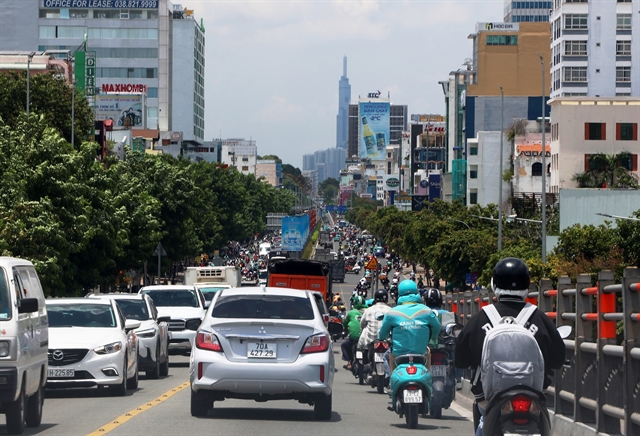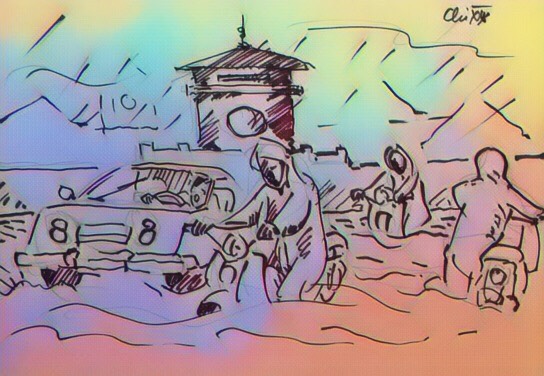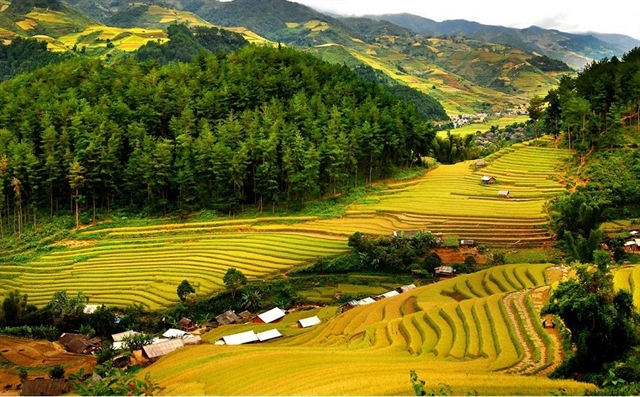 Environment
Environment


|
| Illustration by Đàm Minh Chí |
Khoa Thư
My grandfather turned his head and watched as his house was engulfed in the devastating water.
On a tiny boat, my grandparents and their neighbours carried some clothes wrapped in plastic sheets, leaving the village for higher ground.
It was November 2, 1999, when strong cold air combined with the equatorial low-pressure belt hit central coastal provinces from Quảng Bình to Bình Định.
In my hometown - Quảng Trị Province’s Đông Hà City, total rainfall from November 1 to 4 reached 800mm.
Huế City was the most impacted with rainfall of 1,384mm, the highest level recorded since 1886.
According to a report by the Vietnam News Agency, some 7 million people lost their homes. Hundreds of medical facilities and schools were destroyed.
Nearly 600 people were killed, 75,000ha of paddy fields were damaged and 130,000 tonnes of warehoused food was soaked in floodwater.
For locals, it is remembered as the late 20th-century cataclysm.
Gloomy memories of diseases and starvation still haunt many people, despite the fact that two decades have passed.
When my grandfather was finally able to build a new house, he decided to give it a mezzanine as a hiding place for family members and to store precious assets and rice for when floods hit.
Last week, a report released by Climate Central warned southern Việt Nam could disappear under water due to sea level rises by 2050.
More than 20 million people face watching their homes and livelihoods being taken away by high tides.
HCM City, the country’s economic engine, is apparently at risk of being submerged. The current severe situation, even in high-class neighbourhoods like Thảo Điền and Phú Mỹ Hưng, could get even worse.
Some people, whether in jest or seriously, have started talking about moving from the south and buying houses “somewhere higher”.
Just like thousands other families in central Việt Nam 20 years old, running is the best policy.
But what about those who have to stay, whose livelihoods depend heavily on paddy fields in Mekong Delta or neon streets in HCM City?
After five days at a community house, my grandparents came back to their village which was covered in mud. They believed they could rebuild it, regain what was gone and mitigate the impacts of later disasters.
But what about southern people in 2050? If they lose their land, they will lose it forever.
Đà Nẵng City is also in the spotlight, as its sandy beaches are choked in plastic waste after excessive rain over the last few weekends.
In a photo currently going viral online, thousands of used plastic bottles were found inside the city’s drainage sewer when cleaning worker tried to unclog it.
Some 6,000 households of northern central Nghệ An Province’s Vinh City will never forget the serious flooding in mid-October which left them in the dark for several days due to electricity cuts.
The reason, ironically, was because Đông Vĩnh Ward authorities forgot to build a drainage system when upgrading Trần Bình Trọng Street earlier this year, preventing water from flowing away in case of heavy rain.
Other wards faced the same ordeal as ponds, lakes and fields through which water runs to the sewer have been encroached upon for construction.
“Extreme weather does not care about man-made borders, whenever the tide rises or storm hits it affects the whole region,” Henk Ovink, Special Envoy for Water Affairs of the Netherlands, told Việt Nam News this time last year.
Flooding is no longer a problem for disaster-prone localities like Quảng Trị or Huế.
Extreme weather events no longer just come, destroy and go like the 1999 flood in central provinces. It has become a part of our lives, an issue we create and have to fight every day.
People must stop thinking of escaping from the bitter reality and instead start being responsible for our environment and find solutions to increase community resilience to climate change. — VNS




.jpg)